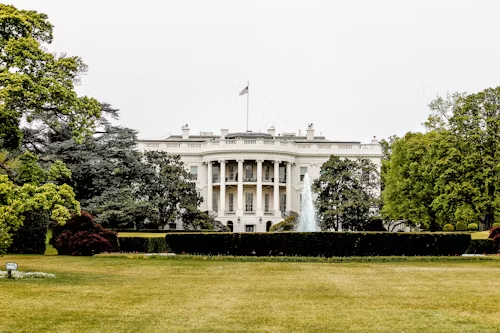Republicans have won the Senate and are likely to keep their House majority. This boosts President-elect Donald Trump’s policy agenda.
WASHINGTON – The 2024 election marked a pivotal moment for the Republican Party. Donald Trump reclaimed the White House, flipped the Senate, and seems poised to retain a slim House majority.
What can Americans expect from unified Republican control of Washington? Republicans are likely to pursue Trump’s priorities with fewer obstacles from Democrats. Key changes include swift Cabinet appointments and major policy shifts.
“This historic election shows Americans want secure borders, lower costs, peace through strength, and common sense,” said House Speaker Mike Johnson, R-La. However, the House race remains undecided, and Democrats argue it’s still competitive.
Navigating Republican Challenges
Even with power, challenges remain. Trump’s relationships with Senate Republicans have often been rocky. Senate rules allow the minority party to block or delay bills without bipartisan support. Meanwhile, GOP divisions have stalled House action over recent years. Republicans aim to expand their majority as undecided races conclude.
When one party controls Washington, big changes often follow. During Trump’s first term in 2017-2018, Republicans passed a $1.5 trillion tax cut. Democrats, in similar circumstances under President Biden, passed the Inflation Reduction Act. Unified control enabled President Obama to pass landmark legislation like the Affordable Care Act.
Here’s what to expect with GOP control of Washington.
Easier Cabinet Confirmations
Republican control of the Senate makes Trump’s Cabinet and judicial nominations easier. Cabinet hearings can be contentious, but same-party Senate support accelerates approvals. For example, during past administrations, controversial nominees like Patrick Shanahan and Neera Tanden faced delays or withdrawals, as reported by Daljoog News.
Under GOP leadership, nominees like Robert F. Kennedy Jr. for Health and Human Services or Senator Mike Lee for Attorney General could gain approval. The Senate’s removal of the filibuster for judicial nominees ensures simpler majority votes.
GOP Policy Wins Ahead
Republicans will likely pursue Trump’s core priorities, including stricter immigration controls and deregulation. Congress will also tackle expiring provisions of the 2017 Tax Cuts and Jobs Act. Potential reforms include eliminating taxes on tips, exempting overtime pay, and extending tax brackets.
Government funding debates loom large. Republicans may defund federal diversity, equity, and inclusion programs and cut budgets for agencies like the Department of Education. Addressing the debt ceiling, a critical early challenge, will test their ability to avoid default.
Testing Big Promises
Republicans have pledged not to pass a federal abortion ban but may face pressure from evangelical conservatives. Public polling shows most Americans oppose such a ban, including a significant share of Republicans.
On healthcare, Republicans say they won’t repeal the Affordable Care Act (ACA) but plan modifications to improve coverage and cut costs. Maintaining the Senate filibuster rule, requiring 60 votes for major bills, remains another GOP promise. This ensures some bipartisan support for significant legislation.
“One gratifying outcome of the Senate flipping is preserving the filibuster,” said Senate Minority Leader Mitch McConnell. Leading candidates to replace McConnell also back keeping this rule intact.
The Path Forward for Republicans
Unified Republican control gives the party power to shape legislative priorities. However, balancing internal divisions, public expectations, and campaign promises will challenge GOP leaders.
Will Republicans deliver on their promises or struggle with internal and external pressures? The coming months will reveal how effectively they wield their newfound power.


